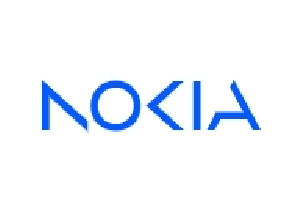Ericsson profit soars as it warns of China dependency amid tariffs
Ericsson's first quarter ended about two weeks ago, but its finalization of the standard earnings report may have been unusually last minute this time around. On April 11, the US government took fright at the possible impact of tariffs on various electronic components used by Ericsson and other kit makers and decided to exempt those from the taxes. This limits the impact of US tariffs to a single percentage point of Ericsson's gross margin for the current quarter, said the company. For the first of this year, at current exchange rates, that would equate to about $56.5 million.
"It's based on where we came out on Friday," said Lars Sandström, Ericsson's chief financial officer, in response to analyst questions today about the impact on the Swedish vendor. "As you know, there will be new information coming, and how that will impact we'll have to follow, but we just wanted to give our best estimate of where we stand now."
The update came as Ericsson reported first-quarter results that evidently pleased analysts, sending its share price up 9% when the market opened in Stockholm today. In a flat market for the 5G products that Ericsson sells, reported revenues of 55 billion Swedish kronor (US$5.6 billion) were unchanged on a constant-currency basis, compared with the year-earlier quarter. But Ericsson's gross margin surged 5.7 percentage points, to 48.2%, and its net profit soared 61%, to SEK4.2 billion ($430 million). The share price recovery after recent turbulence almost restored Ericsson to where it was on the eve of Liberation Day (April 2), when US President Donald Trump began machine gunning other countries with tariffs.
Much has changed since then, of course. The base rate for nearly everyone except China has seemingly been lowered to just 10%, while China faces a crushing 145%. And those component exemptions may not last. Last weekend, undoubtedly stung by criticism he had wimped out, Trump took to social media to say there would be no "exceptions" and that semiconductors and other electronics would ultimately go into a separate tariff bucket. If that happens, the impact on Ericsson is likely to be much greater than a percentage point of its gross margin.
East versus west
There was a tacit acknowledgement by Börje Ekholm, Ericsson's CEO, of the risks to the company, and others, in the absence of US suppliers. "The ecosystem of component suppliers – that is where we actually have invested quite a lot over the years to broaden that – but that is probably where we need to be a bit more active to build a western ecosystem in those components," he said in response to analyst questions.
Diversification by Ericsson means it today operates four factories worldwide, said Per Narvinger, the recently appointed head of Ericsson's mobile networks business group, its biggest division. Besides the highly automated factory in Texas it opened in 2020, these include facilities in Asia, Europe and South America. The Texas plant, intended to serve all the needs of Ericsson's US customers, means Ericsson is not subject to tariffs on finished goods it would incur if manufacturing happened outside the US.
As for more advanced semiconductors, those are typically designed by Ericsson and its US chip partners and made by Asian foundries outside China, such as Taiwan's TSMC. where Ericsson and others look more heavily reliant on China is for the more basic and lower-value components such as inductors, resistors, printed circuit boards and essential materials.
"If you just look at the past couple of decades, of course a lot of production had moved to China, and China had built a very strong ecosystem around that production – I mean passive components or components without very high value but needed to build your products," Narvinger told Light Reading on a Teams call. "If we are now going to build a similar ecosystem in the US, it will not happen overnight."
In a world where tariffs are commonplace, the ideal situation for Ericsson, he thinks, would be to have an ecosystem of US suppliers adjacent to its own investment in US manufacturing. "Then you would avoid all the discussions about tariffs," said Narvinger. "But that is not where we are today. After years of globalization, the supply chains are very interconnected."
Ericsson has been in discussions with key stakeholders and governments about the economic challenges of creating a western supply chain for many of these components. At first, any reliance on US manufacturers, struggling to match Asian rivals on shipment volumes, would inevitably make products more expensive, says Narvinger. "You're going to have to drive the volumes back to the western ecosystem in order for it to be competitive with the eastern system," he explained.
Jobs for the robots
The dramatic improvement in Ericsson's profitability for the recently ended first quarter at least puts it in a reasonably strong position to absorb the impact of tariffs. It is now guiding for an adjusted gross margin this quarter of between 48% and 50%, which would compare with the 43.4% it reported for the same part of 2024. Ericsson has benefited from an increase in the share of its work done in the profitable US market as well as telco spending on higher-margin software products rather than lower-margin hardware.
While Ericsson now lumps US revenues into the "Americas" region when reporting quarterly results, those regional sales were up 26% year-over-year, for the first quarter, and accounted for 38% of the total, compared with 31% the year before. There are signs of telco stockpiling in anticipation Trump will go even further. "Some of that product mix change could also be due to the tariff discussions," said Narvinger.
The cloud software and services business group, Ericsson's second-largest unit by sales, also reported its "first positive quarter ever," said Ekholm during today's update. Its sales were unchanged, at SEK13 billion ($1.3 billion), but it swung from an operating loss of SEK400 million ($41 million) a year earlier to a small profit of SEK100 million ($10.2 million).
The news out of the enterprise business group was not so good, with sales down 1% year-over-year, to SEK5.9 billion ($600 million), and the operating loss shrinking from SEK1.6 billion ($160 million) to SEK1 billion ($100 million). Revenues from Vonage, for which Ericsson paid $6.2 billion in 2022, fell 9%, to SEK3.4 billion ($350 million). The drop comes despite Ericsson's hopes that Vonage will benefit from interest in network application programming interfaces, used by software developers to access 5G features.
Ericsson also attributed the sharp improvement in profit margins to cost-cutting measures. It has continued to pour additional funds into research and development expenditure, which rose 3% year-over-year, to SEK12 billion ($1.2 billion). But there have been hefty reductions elsewhere and company headcount had dropped to below 93,000 by the end of March. When Ekholm took over at the start of 2017, Ericsson had as many as 111,500 employees.
In North America, where Ericsson runs its robotized Texan factory, headcount has dropped from 13,529 to 9,935 over that period just as annual US sales have rocketed by 73%. Tariffs or no tariffs, smart Americans will realize jobs probably aren't coming home.





